Spinach Malfatti With Sage Brown Butter Sauce
In Italian, malfatti translates to “bad made.” Unlike gnocchi, their dumpling cousin, malfatti are more “roughly” made: hand-rolled, then crudely cut without much thought to uniformity or perfection. But that’s precisely what makes them so lovely – their provincial form and handmade taste. Because they’re made mostly with ricotta and contain very little flour, the result are light and airy pillows, a feat not so easily achieved in gnocchi making. In fact, if you’ve ever made gnocchi you’ll find that more times than not they turn out more dense than you’d like, and you have to concentrate fiercely on the task at hand, making sure to not overwork the dough. Malfatti, on the other hand, are easy to make and hard to ruin.
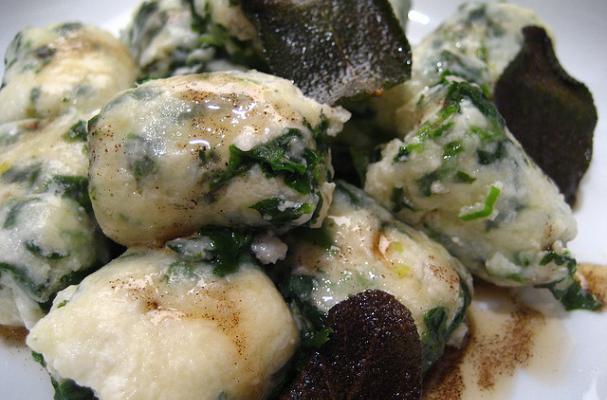 1 ½ C. Ricotta cheese
1 ½ C. Ricotta cheese
2 C. packed fresh spinach
1 C. Italian-seasoned breadcrumbs or panko
2 eggs, beaten
¼ C. Parmesan cheese
¼ C. minced green onions
1 T. basil, finely chopped
¼ tsp. nutmeg
1 clove garlic, minced or pressed
½ tsp. salt
Flour
4 T. butter
Approximately 10 sage leaves
In a medium covered saucepan, steam spinach in 2 T. water until done, approximately 1 minute. Drain spinach and squeeze out extra liquid until very dry. Combine spinach with all ingredients, except flour and sage. Refrigerate 1 hour. Bring a large pot half full of salted water to a simmer. Drop spinach cheese mixture by T. into flour and roll each lightly into long logs. Cut into 1 ½- inch dumplings. Drop dumplings into the gently simmering water. When they rise to the top, remove with a slotted spoon, approximately 3 to 5 minutes. In a saucepan, heat butter over medium-high heat. Once butter begins to brown, add sage and cook until leaves are crisp (approximately 1 to 2 minutes.. Spoon brown butter over malfatti and top with the crisp sage leaves. If preferred, top with more Parmesan cheese.
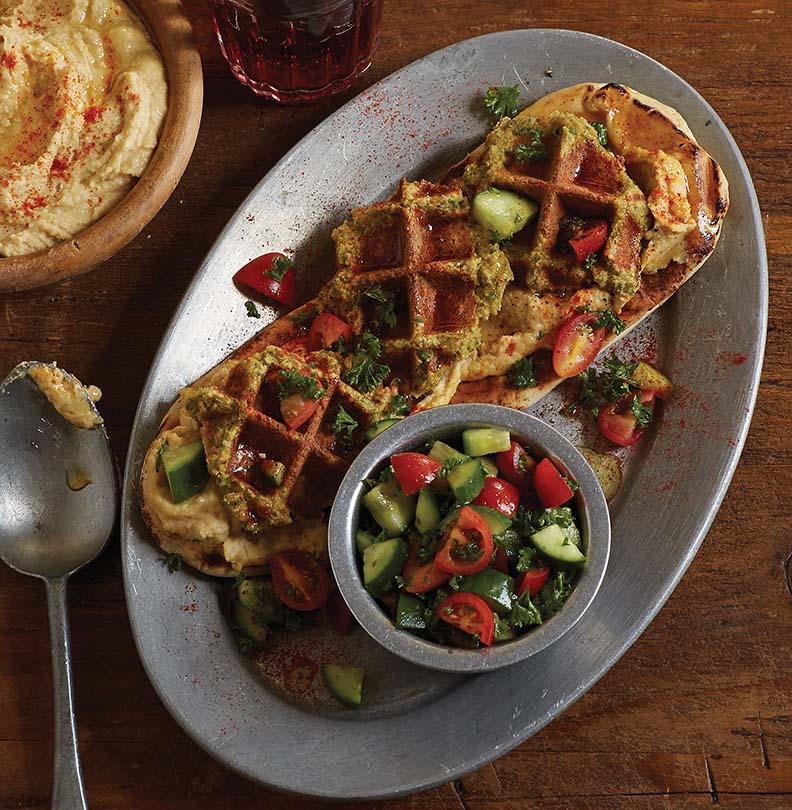
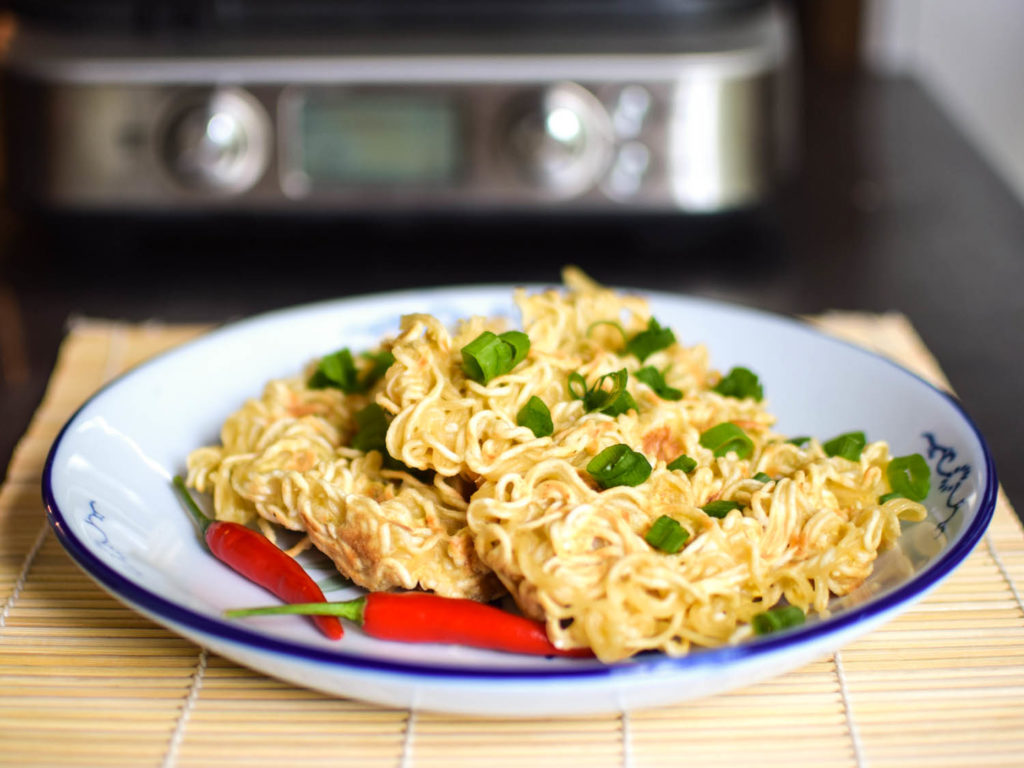
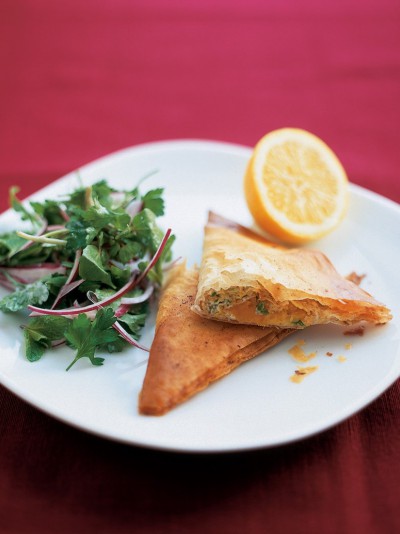
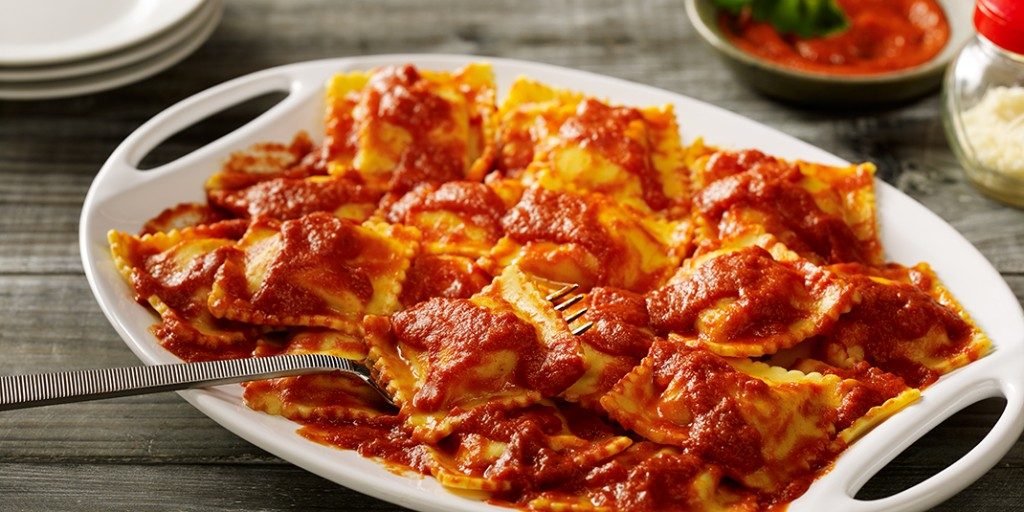
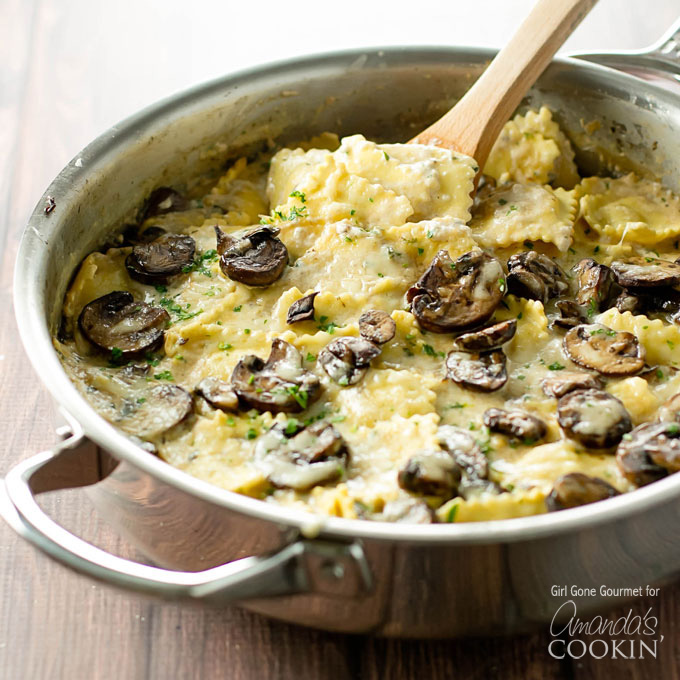
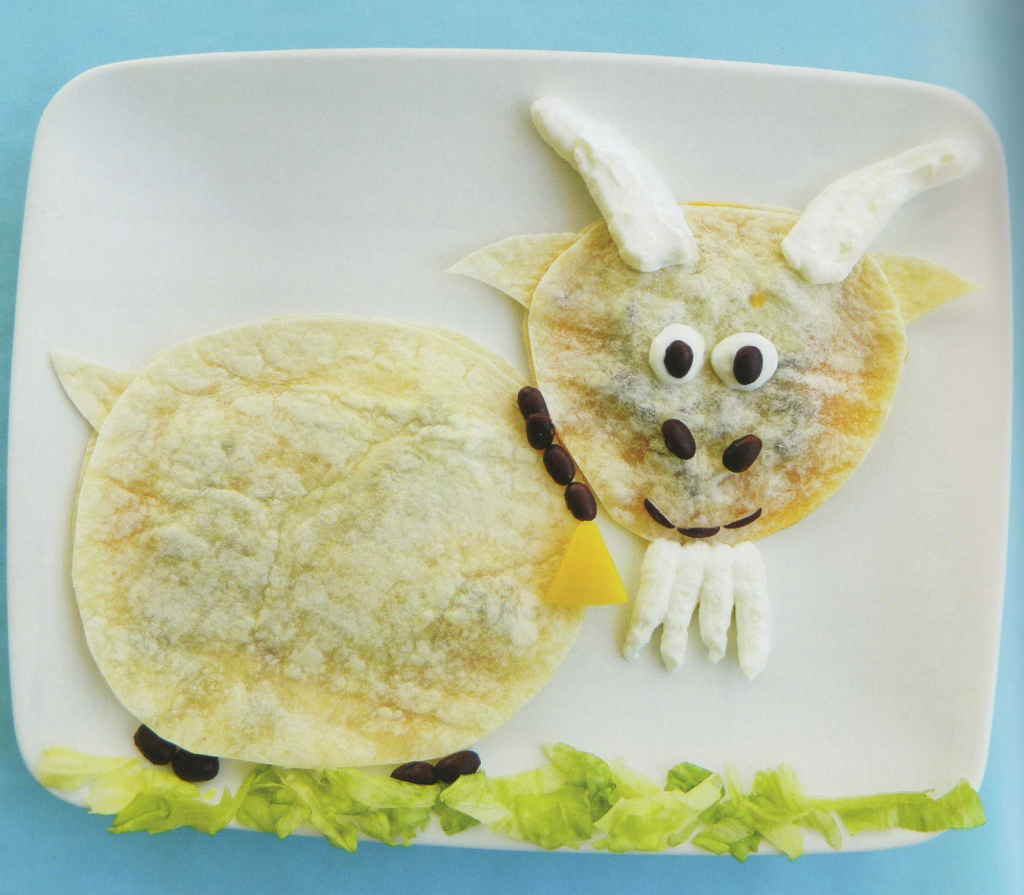
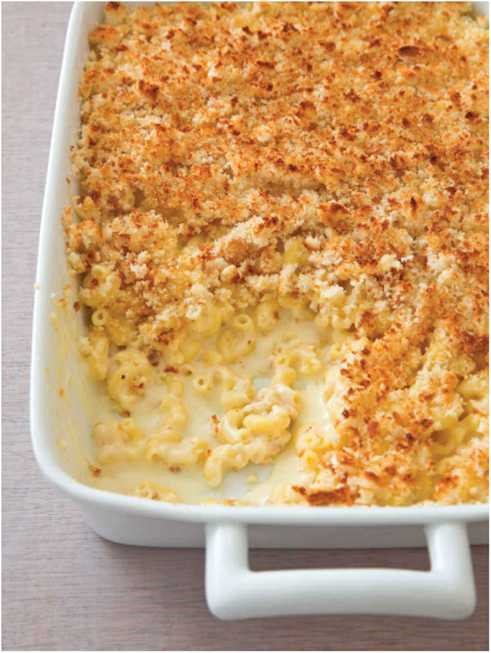
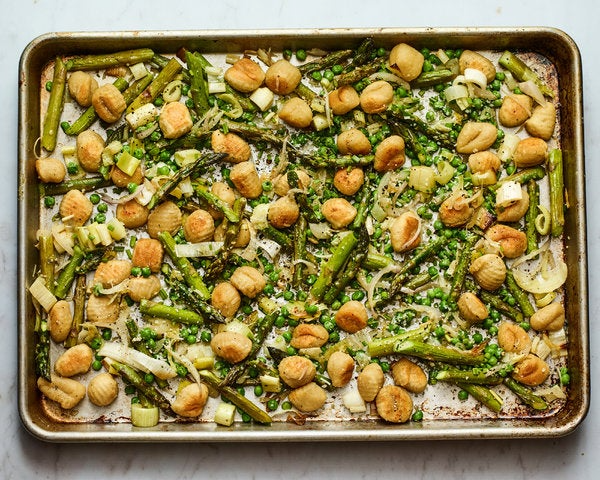 Sheet-Pan Gnocchi with Asparagus, Leeks and Peas
Sheet-Pan Gnocchi with Asparagus, Leeks and Peas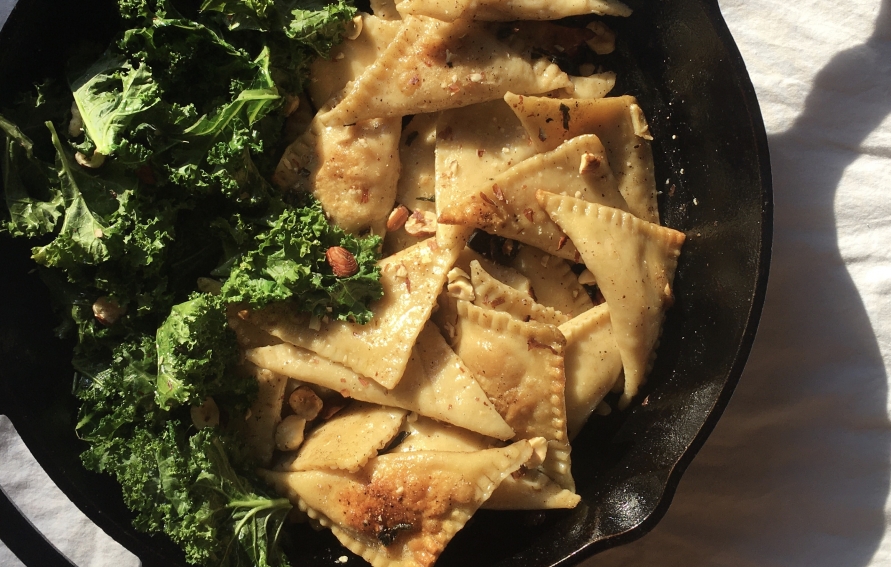 Butternut Squash Ravioli with Sage and Hazelnuts
Butternut Squash Ravioli with Sage and Hazelnuts Onion Pie
Onion Pie Winter Squash-and-Onion Tart
Winter Squash-and-Onion Tart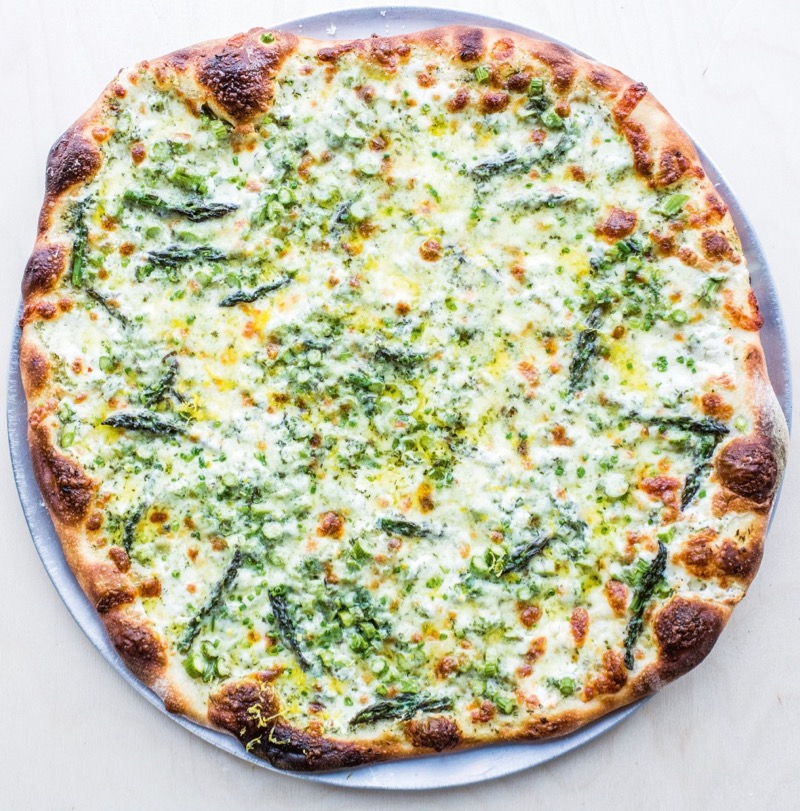
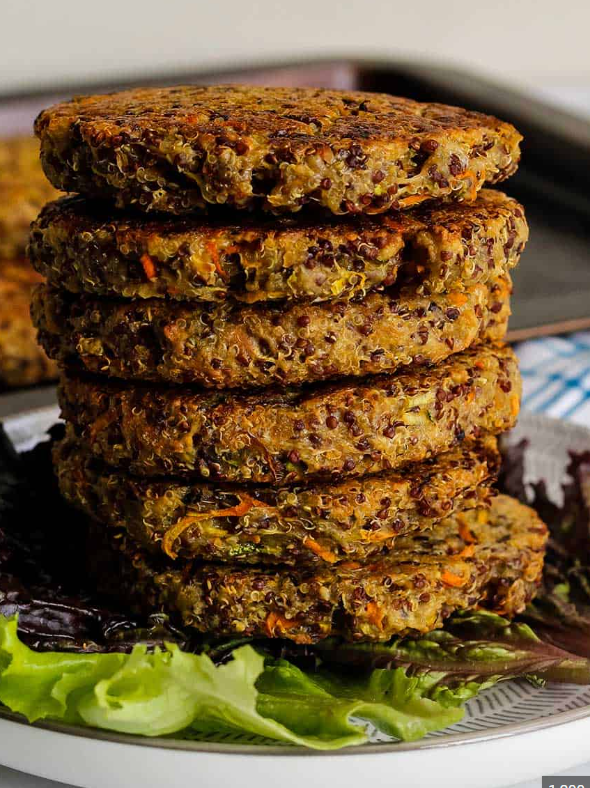 Vegetable & Quinoa Patties
Vegetable & Quinoa Patties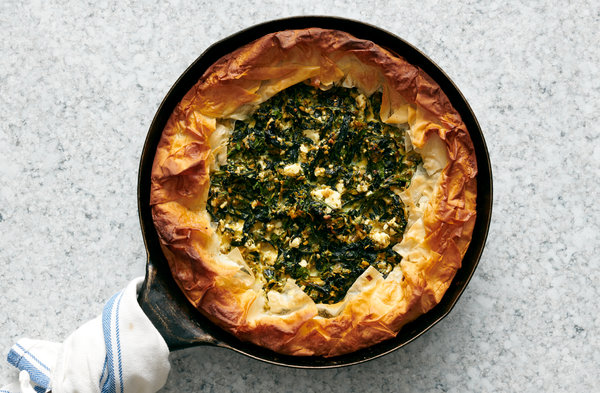 Skillet Spanikopita
Skillet Spanikopita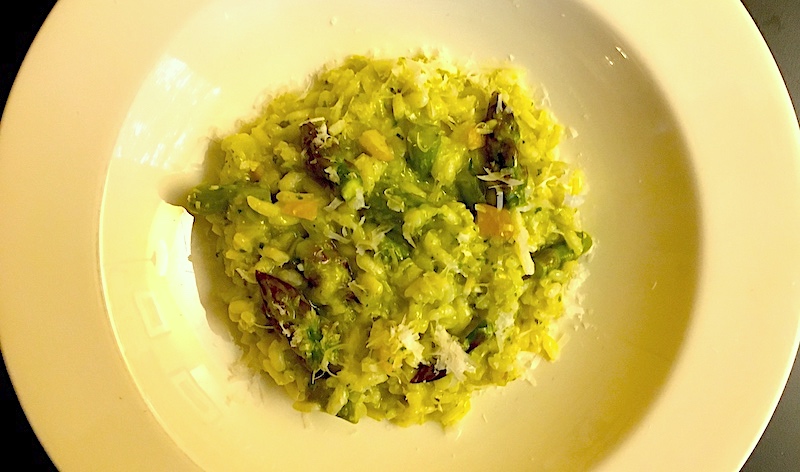 Asparagus Risotto with Sorrel Pesto and Preserved Lemon
Asparagus Risotto with Sorrel Pesto and Preserved Lemon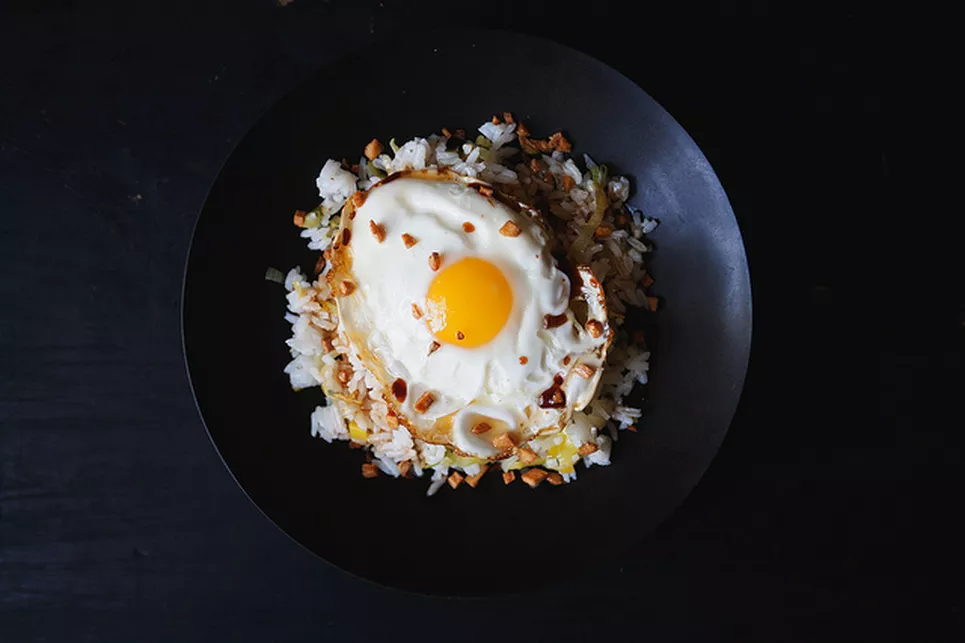 Jean-Georges’ Ginger Fried Rice
Jean-Georges’ Ginger Fried Rice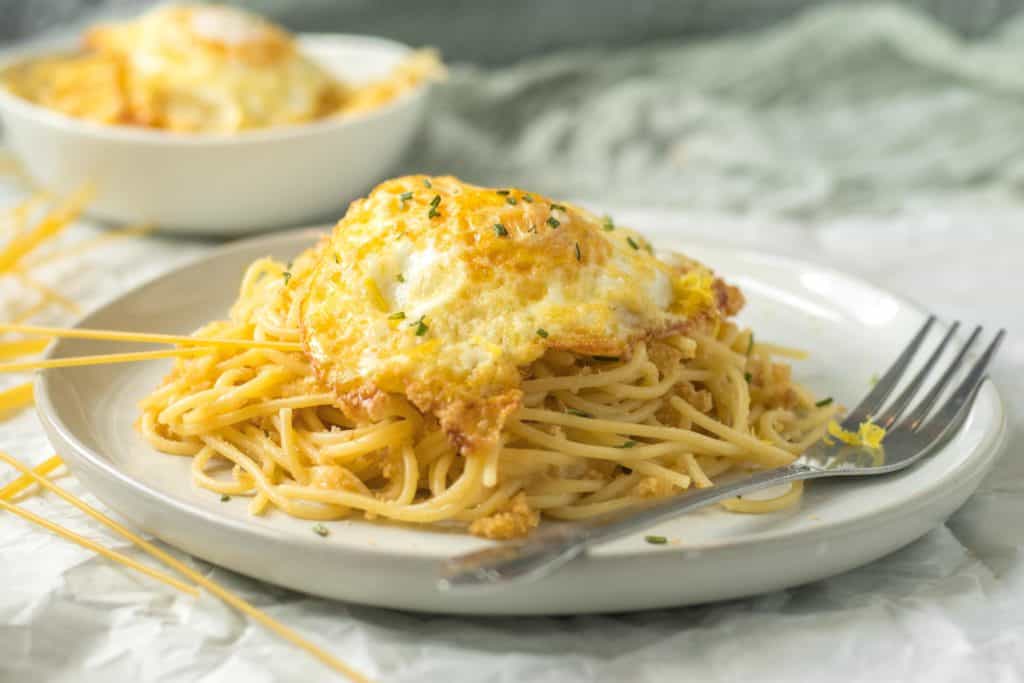 Pantry-Friendly Spaghetti Pangrattato with Crispy Eggs
Pantry-Friendly Spaghetti Pangrattato with Crispy Eggs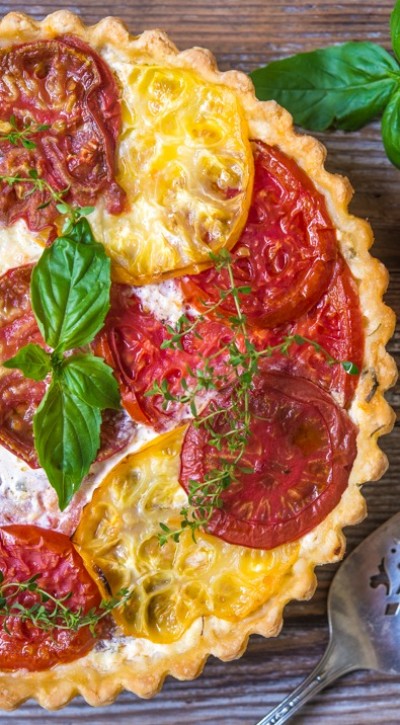 Tomato, Camembert & Gruyere Tart
Tomato, Camembert & Gruyere Tart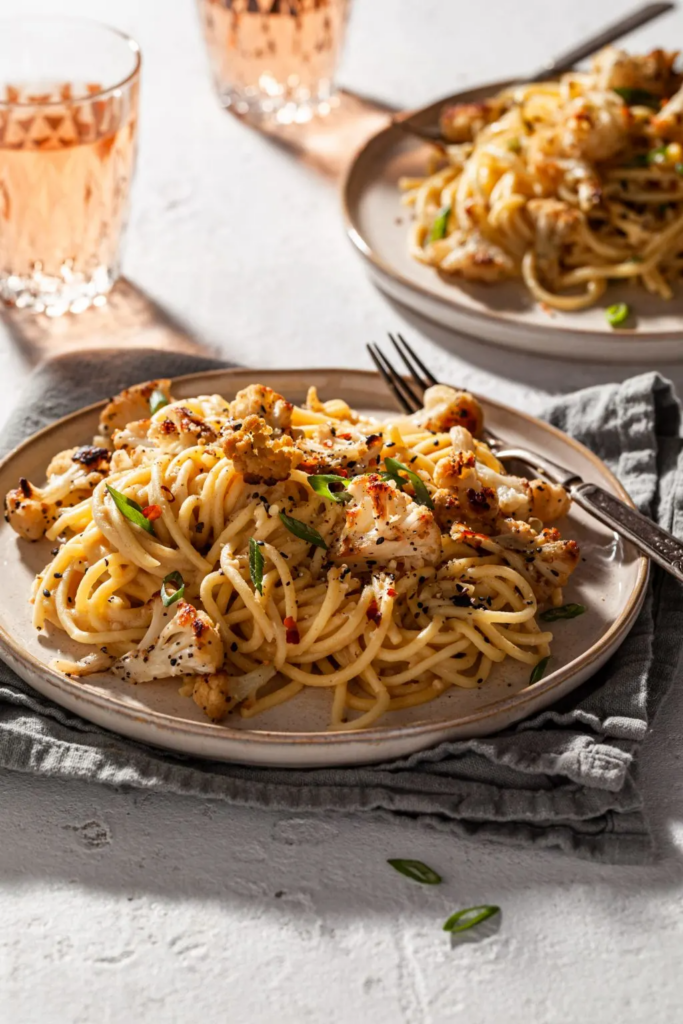 Garlic Miso Pasta with Roasted Cauliflower
Garlic Miso Pasta with Roasted Cauliflower Crabless Crab Cakes
Crabless Crab Cakes